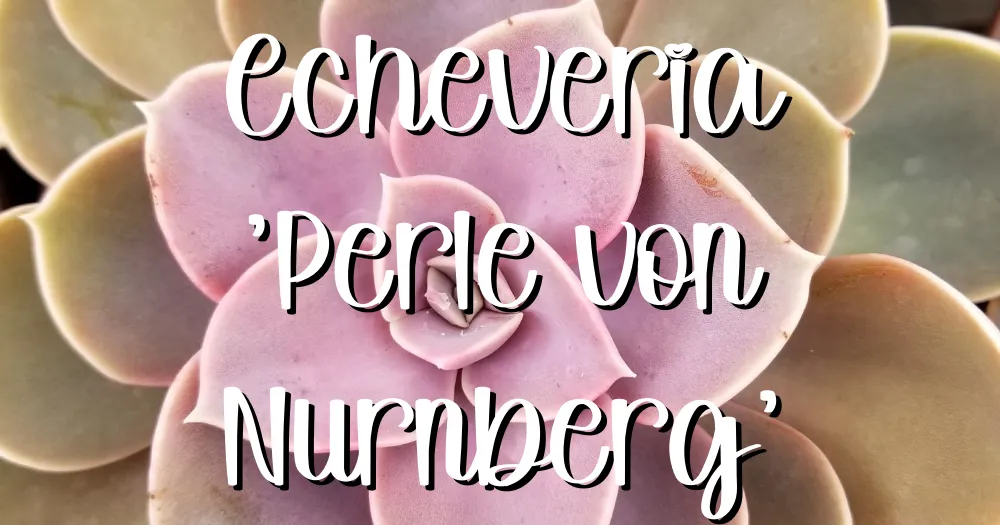Echeveria ‘Perle von Nurnberg’ is a beautiful and showy succulent that can be a perfect addition to your indoor or outdoor garden. Its most striking feature is its rosettes of silvery-purple, fleshy leaves that have a powdery, ethereal appearance. In bright light, the tips of the leaves blush with an exquisite pink hue, creating a stunning contrast against the silvery-purple color of the foliage.
One of the most charming characteristics of this succulent is its flowering season, which occurs in summer. During this time, tall and elegant flower stalks emerge from the rosettes, reaching towards the sky and carrying clusters of beautiful pink and yellow flowers. The blooms of Echeveria ‘Perle von Nurnberg’ are as eye-catching as the foliage, contrasting yet complementing the vivid colors of the leaves. Once the flowering season is over, the stalks can be easily pruned back to restore the compact rosette shape of the plant.
Dig in!
Origin/Native Habitat
Echeveria ‘Perle von Nurnberg’ is a hybrid of Echeveria gibbiflora ‘Metalica’ and Echeveria elegans. First bred in Germany in the early 1900s, Echeveria ‘Perle von Nurnberg’ has become a favorite succulent globally due to its striking colors and textures.
You might also like: Native Habitats of Succulents: Explore 3 Incredibly Diverse Environments
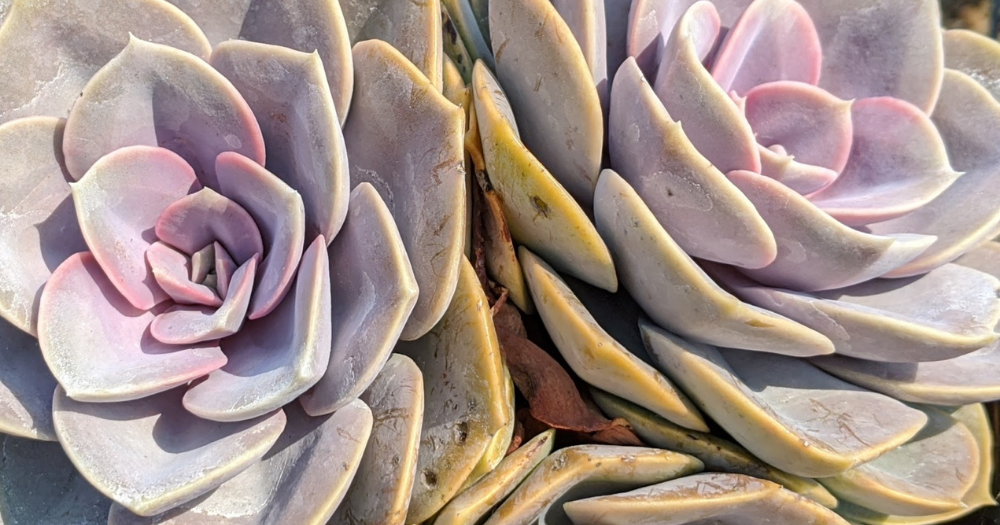
How to Water and Fertilize
To care for your Echeveria ‘Perle von Nurnberg’, water deeply but infrequently, allowing the soil to dry out completely between watering sessions. This drought-tolerant succulent is prone to root rot if the soil is kept constantly moist. Water less frequently in winter when growth slows. Avoid splashing water on the leaves when watering, as this can cause leaf rot. If water does get on the leaves, dry them off immediately.
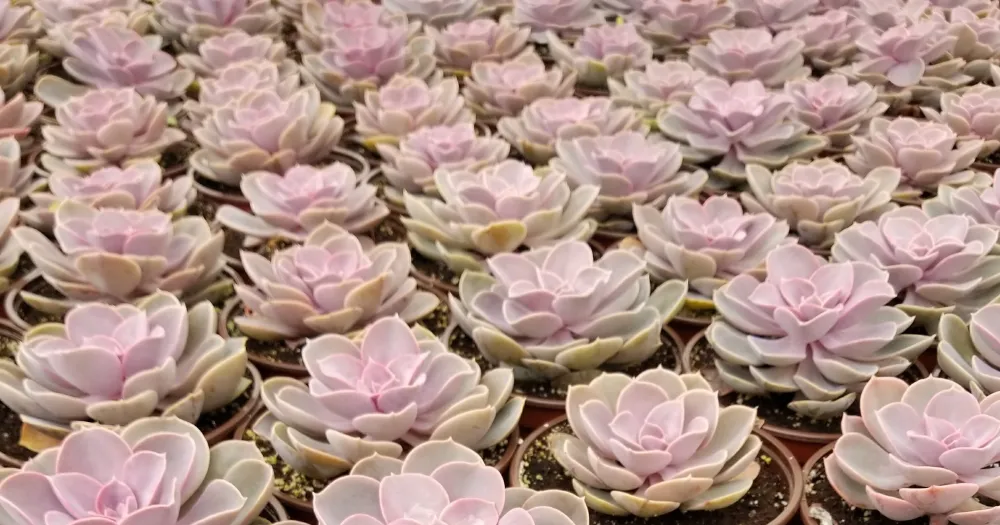
Only fertilize your Echeveria ‘Perle von Nurnberg’ during the growing season, about once a month. Look for a balanced fertilizer specifically formulated for cacti or succulents that contains equal parts nitrogen, phosphorus, and potassium (such as 10-10-10). Do not overfertilize, as this can encourage excess, susceptible growth that is prone to rot. Cease fertilizing in winter when Echeveria ‘Perle von Nurnberg’ growth naturally slows.
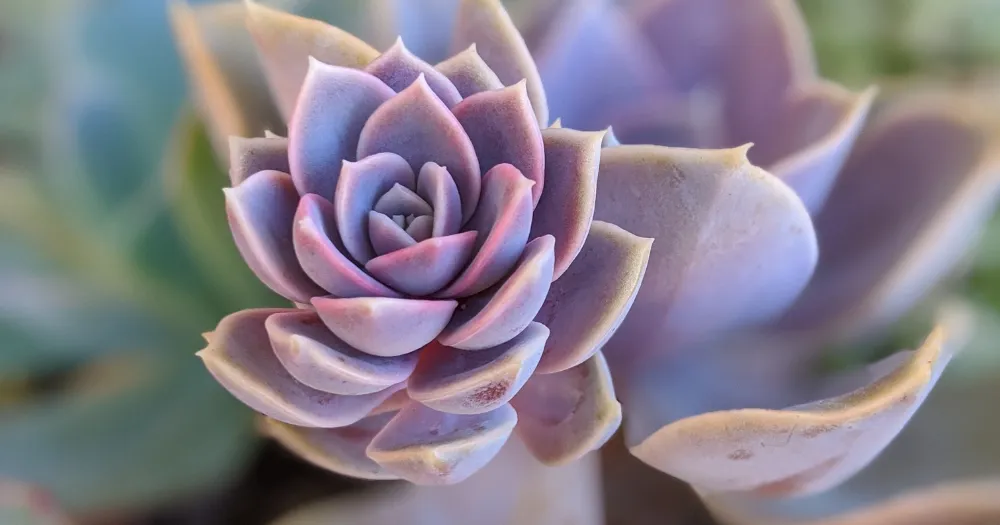
For the health of your Echeveria ‘Perle von Nurnberg’, plant it in a pot with drainage holes and well-draining cactus or succulent mix. Watch for signs of overwatering or underwatering and make adjustments to your watering schedule as needed to keep the soil lightly moist but not soggy.
You might also like: How & When to Water Succulents So They Don’t Die (2023 Update)
Succulent Fertilizer: The Ultimate Guide to Healthy Succulents + 8 DIY Fertilizer Recipes
Soil
To grow Echeveria ‘Perle von Nurnberg’ successfully, it is important to provide it with well-draining soil to prevent root rot. This succulent needs a soil mix that allows excess moisture to drain away quickly. A cactus or succulent potting mix that contains perlite, coarse sand, or pumice can help improve soil drainage. You can also add soil amendments like Turface or another calcined clay aggregate to the mix. Terracotta pots are a great choice for Echeveria ‘Perle von Nurnberg’ because they allow for good airflow and can help regulate soil moisture.
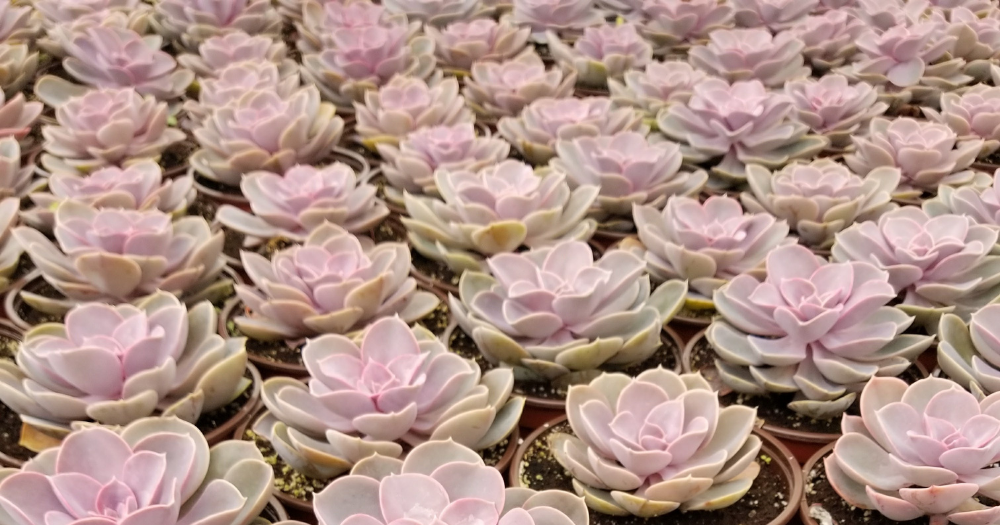
To ensure that Echeveria ‘Perle von Nurnberg’ thrives, it is essential to mimic its native environment. This succulent requires loose, fast-draining soil that allows water to quickly flow through and not pool, which can lead to rot. Grow Echeveria ‘Perle von Nurnberg’ in a container with drainage holes. Use the ‘drench and dry’ method for watering, allowing the soil to dry out completely between waterings. Echeveria ‘Perle von Nurnberg’ is drought-tolerant and does not require frequent watering. Overwatering Echeveria ‘Perle von Nurnberg’ can cause root rot and other fungal diseases.
You might also like: Succulent Soil: Ultimate Guide & 4 DIY Recipes to Keep Your Succulents Happy and Healthy
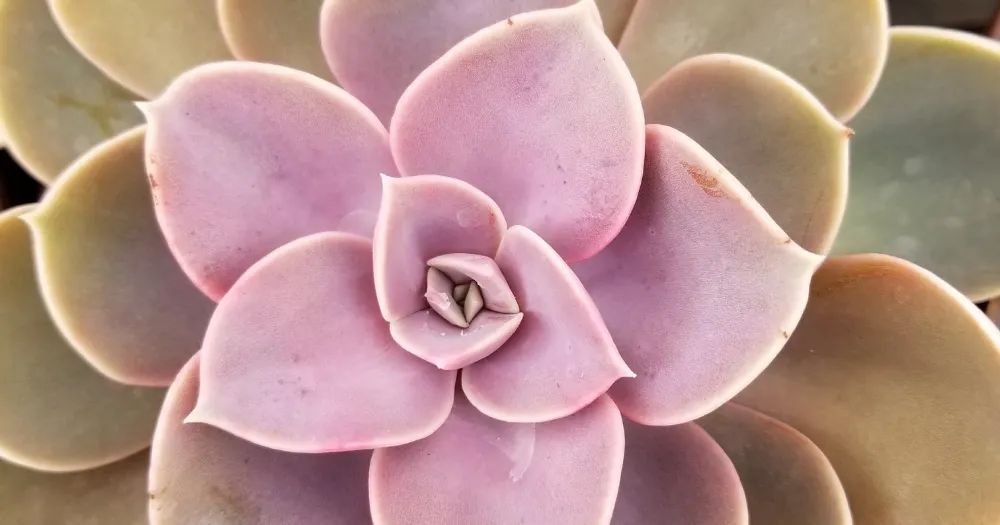
How to Propagate Echeveria ‘Perle von Nurnberg’
Echeveria ‘Perle von Nurnberg’ can be propagated from stem cuttings or offsets.
To propagate from stem cuttings, take 2-inch cuttings from healthy plants. Allow the cut ends to dry for several days until callused, then plant Echeveria ‘Perle von Nurnberg’ in well-draining soil. Keep lightly moist and in bright, warm conditions. Roots and new growth will appear in a few weeks.
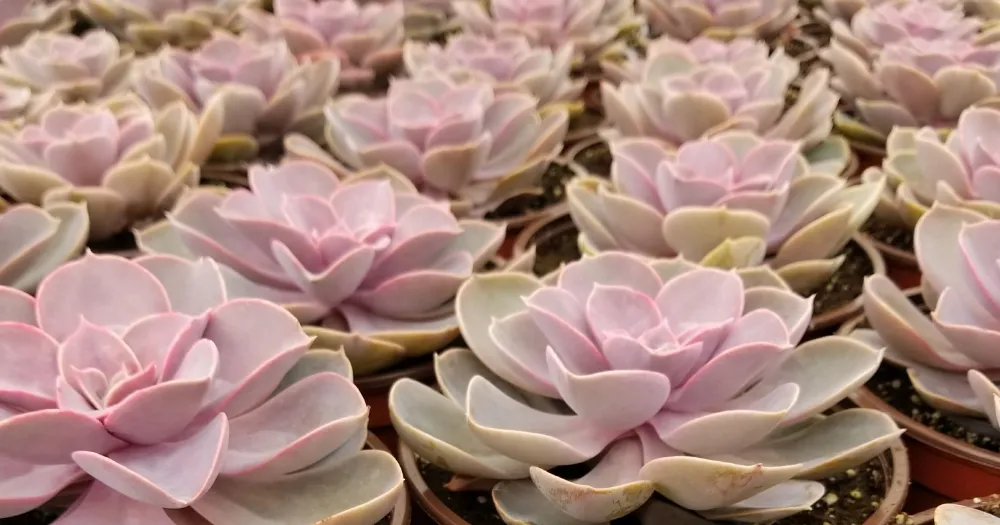
Echeveria ‘Perle von Nurnberg’ offsets can be removed once several inches tall with a developed root system. Allow the offset to dry for a couple days, then plant in suitable soil. Keep lightly watered and in a warm, bright spot. In a few weeks, the offset will be rooted and producing new leaves, ready to grow on as a mature plant.
You might also like: Succulent Propagation Timeline
For both methods, use a sharp knife and plant in fast-draining soil. Allow cut surfaces to dry before planting. Provide bright light and keep soil lightly moist as new roots and growth establish. Once established, water more regularly. With proper conditions, Echeveria ‘Perle von Nurnberg’ propagation will be successful and rewarding.
What are the best ways to propagate Echeveria ‘Perle von Nurnberg’?
The best ways to propagate Echeveria ‘Perle von Nurnberg’ are through stem cuttings, leaf cuttings, and offsets. Stem cuttings should be taken from healthy, mature stems and planted in a well-draining soil. Leaf cuttings should be taken from healthy, mature leaves and planted in a moist, well-draining soil. Offsets can be removed from the main plant and planted in a well-draining soil.
How long does it take for Echeveria ‘Perle von Nurnberg’ to grow from propagation?
The time it takes for Echeveria ‘Perle von Nurnberg’ to grow from propagation can vary depending on the method used and conditions, but generally:
Division – Newly divided clumps will produce offsets and pups within a few months to over a year, depending on conditions. The clumps themselves may not flower for 6-18 months after dividing.
Leaf propagation – Rooted leaves can produce new shoots within 3-6 months. It may take another growing season for the new plants to produce offsets or flower. So you can expect leaf propagation to produce flowering plants within a year to 18 months.
Stem propagation – Rooted stem segments can take the longest to establish as they have to grow roots and shoots at the same time. New growth may take 6-12 months to appear, and the plants can likely take 18-24 months after propagating to flower.
Offsetting – New offsets that are well-established can produce shoots quite quickly, within 3-6 months, and may flower within their first growing season after propagating. But smaller offsets will need more time.
What are some common mistakes to avoid when propagating Echeveria ‘Perle von Nurnberg’?
Overwatering – Keep the rooting medium moderately moist, but not soggy. Too much water can cause root rot, especially in succulents. Let the medium dry out between waterings. It’s better to underwater slightly than overwater.
Poor drainage – Use a well-draining rooting medium, such as perlite, grit, or a perlite-amended mix. Water will pool in dense, moisture-retaining mixes and cause root rot.
Closing humidity – While moderate humidity is good for rooting, too much humidity prevents callusing and promotes disease. Do not cover propagated plants or keep them in a closed container. Some light air flow is needed.
Not allowing callusing – Let leaf and stem propagules dry out and develop a thick, hardened callus before placing on medium. This helps prevent excess water loss and rotting. Non-callused propagules will rot more easily.
Lack of lighting – Provide bright, indirect light for propagating succulents. Limited light will stretch out new growth and delay blooming. Low light can also lead to legginess in propagated plants.
Too much fertilizer – Do not fertilize propagated succulents until they develop a healthy, established root system and show sturdy new growth. Too much fertilizer before this can “burn” vulnerable new roots and stems. Apply at half the recommended strength once feeding.
Improper rooting conditions – The conditions needed to root Perle von Nurnberg, like most echeverias, require moderately warm temperatures (around 75 F) and high humidity. Colder conditions can prevent rooting while excessively hot and dry conditions can cause leaf/propagule drop.
Planting before well-rooted – Only plant propagated succulents once they develop a healthy, fibrous root system. Underdeveloped roots may not absorb enough water and nutrients for the plant to establish well after planting.
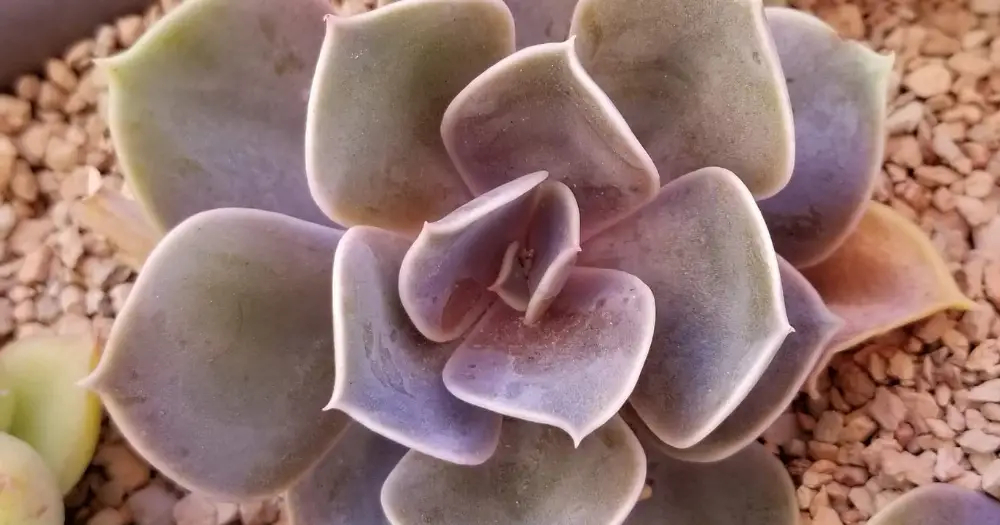
You might also like: Propagating Succulents 4 Ways: The Best Guide Ever
Light Requirements
Echeveria ‘Perle von Nurnberg’ is a sun-loving succulent that requires a lot of bright light to grow and produce its signature colorful silvery purple-pink foliage. It needs at least 6 hours of direct sunlight per day to thrive. If you are growing it indoors, make sure to place Echeveria ‘Perle von Nurnberg’ near a sunny window that receives plenty of light. Insufficient light can cause the plant to grow leggy, lose its vibrant coloring, and fail to produce flowers.
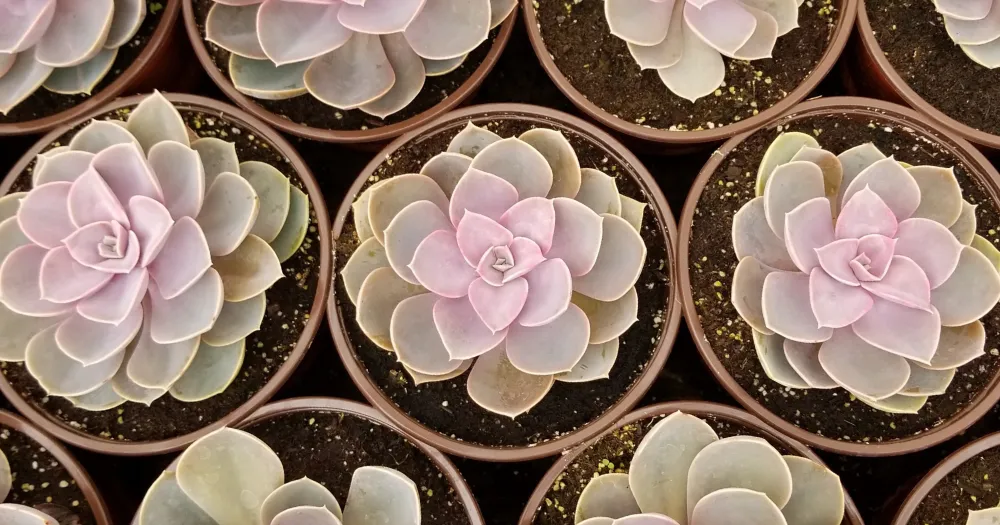
If natural light is limited or not adequate, you can supplement it with a grow light. Aim for 12-14 hours of artificial light per day. It is important to choose a full-spectrum grow light, which mimics the natural light spectrum, and position it 1-2 feet above the plant. By it’s growth, coloration, and blooming, you can tell if Echeveria ‘Perle von Nurnberg’ is receiving adequate light.
In hot climates, afternoon shade is recommended to prevent sun damage to your Echeveria ‘Perle von Nurnberg’. However, in general, the more light this succulent receives, the more colorful it will be. Adequate lighting is crucial to maintaining the health and appearance of Echeveria ‘Perle von Nurnberg’.
You might also like: How Much Light Do Succulents Need? A Comprehensive Guide in 12 Parts
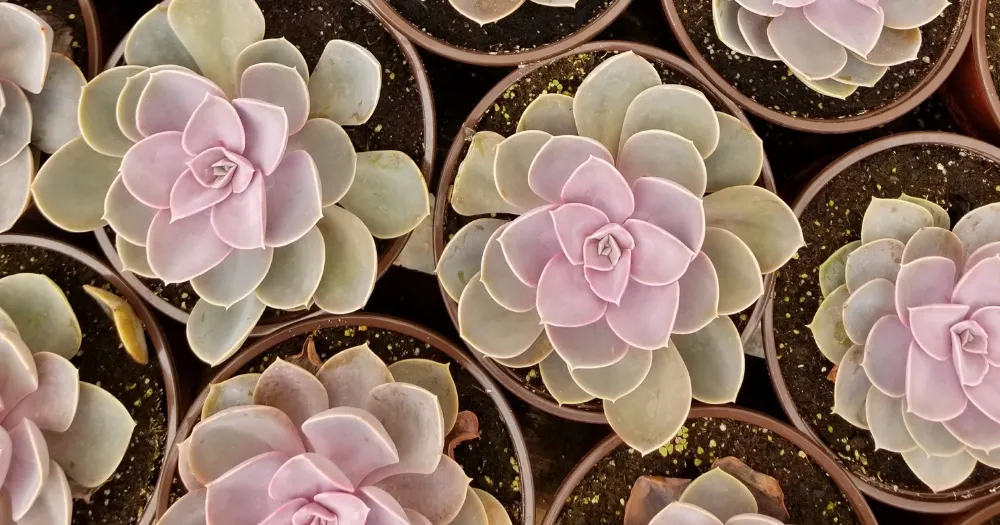
Hardiness Zone and Temperature
Echeveria ‘Perle von Nurnberg’ is a hardy succulent that can tolerate a wide range of temperatures. It is best suited for USDA hardiness zones 9-11, but it can also thrive indoors in cooler climates. Keep your succulent in a warm spot with temperatures between 60-80°F (15-27°C).
You might also like: The 7 Hardiness Zones Where Succulents Easily Thrive
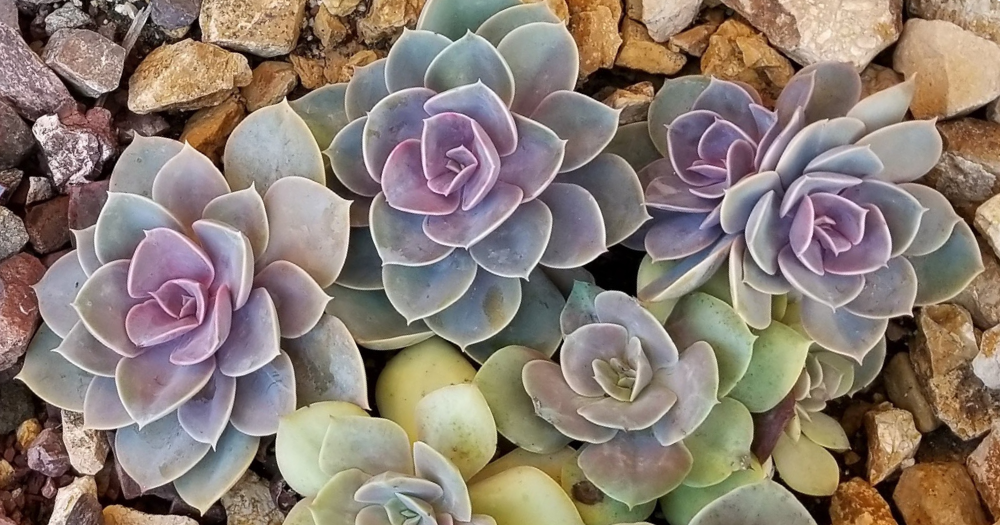
Common Pests, Problems and Solutions
Some common pests to watch out for when growing Echeveria ‘Perle von Nurnberg’ include:
- Mealybugs: Mealybugs are small, white, cottony insects that suck sap from the leaves and stems. They can form large colonies and secrete a sticky substance called honeydew. Check your Echeveria ‘Perle von Nurnberg’ leaf axils and stem joints for mealybugs and wipe them away with a damp cloth. Treat with insecticidal soap or neem oil if needed.
- Spider mites: Spider mites are tiny, web-spinning pests that cause stippling and browning on leaves. They tend to proliferate in hot, dry conditions. Increase humidity, mist regularly, and treat with insecticidal soap. Severe infestations on Echeveria ‘Perle von Nurnberg’ may require miticides containing stronger chemicals.
- Scale: Scale insects appear as small, brown or whitish bumps that suck sap and weaken the plant. Gently scrape off scale with a toothbrush and treat with insecticidal soap or neem oil. For large infestations, use a horticultural oil.
- Aphids: Aphids are small, soft-bodied insects that feed on sap and secrete honeydew. They tend to cluster on new growth and flower buds. Wipe or spray them off with a strong jet of water. Treat with insecticidal soap, neem oil, or imidacloprid spray if needed.
You might also like: 12 Succulent Pests and Diseases: Identification, Treatment, and Easy Prevention of Mealybugs, Thrips and More
Is it poisonous or toxic?
Echeveria ‘Perle von Nurnberg’ is non-toxic and safe for pets and children.
You might also like: Are Succulents Poisonous to Dogs?
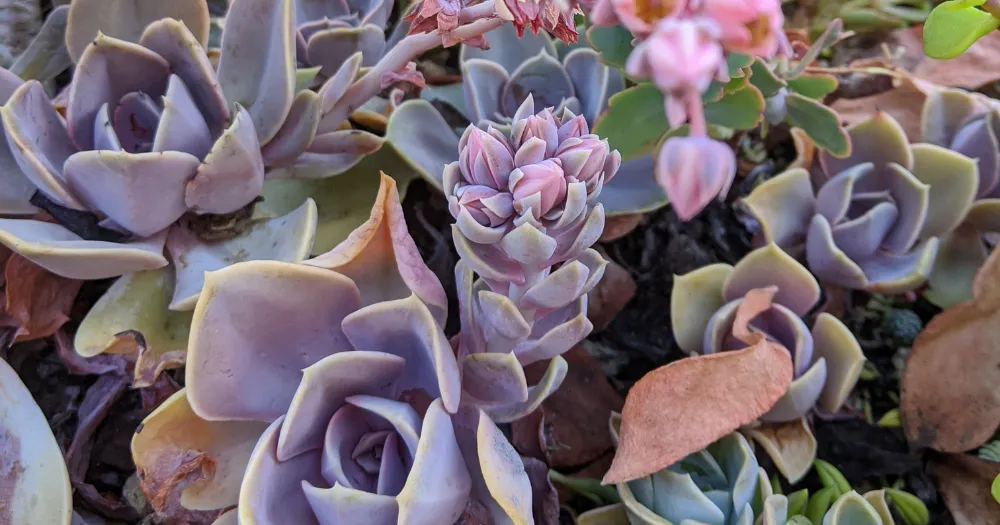
Troubleshooting Echeveria ‘Perle von Nurnberg’
Why is my ‘Perle von Nurnberg’ turning yellow?
If your Perle von Nurnberg is turning yellow, it likely indicates a problem requiring attention.
Possible reasons for yellowing include:
- Overwatering: Excess moisture can cause root rot, leading to yellow, mushy leaves. Allow the soil to dry out.
- Underwatering: Lack of water can also cause yellowing. Increase watering, checking that the soil drains properly.
- Poor drainage: Soil that retains too much water can lead to rot. Repot with well-draining cactus mix.
- Pests: Mealybugs, spider mites, and other pests can induce yellowing. Inspect leaves and treat any infestations.
- Disease: Root rot and other infections can cause yellowing. Remove affected plant parts and improve conditions to prevent spread.
Determine the underlying cause and take appropriate action to recover your Perle von Nurnberg’s health, such as adjusting the watering schedule or repotting to improve drainage. With attention and improved conditions, it can bounce back to health.
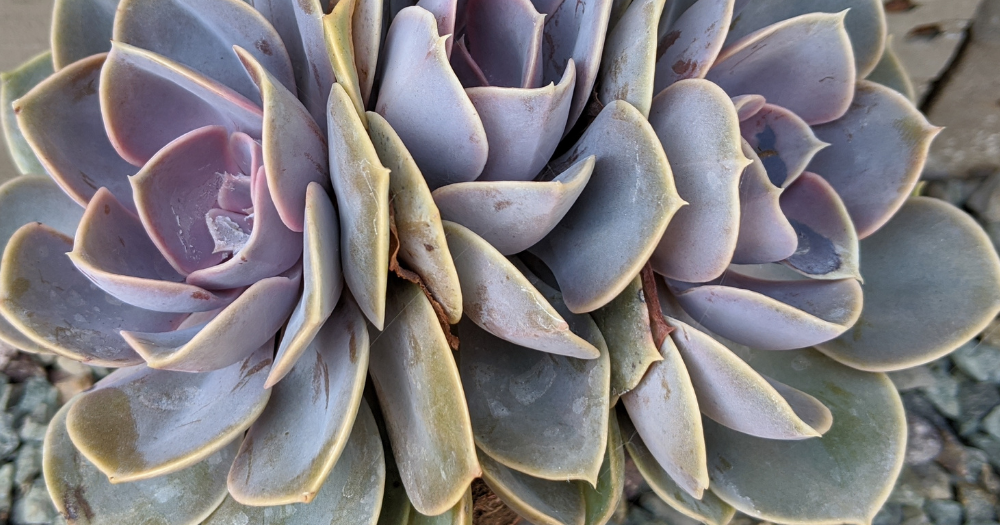
What are the signs that my ‘Perle von Nurnberg’ may have root rot?
To determine if your Perle von Nurnberg has root rot, you should look for the following indications:
- Yellowing or wilting leaves: This can suggest that the roots are unable to absorb water and nutrients properly due to rot.
- Mushy, brown roots: Examine the roots and search for any that are soft, brown, or mushy. Healthy roots should be white or tan and firm.
- Foul odor: If the soil or roots have an unpleasant smell, this may indicate the presence of rot or another fungal disease.
- Slow growth: Root rot can restrict nutrient uptake, resulting in little or no new growth. If your plant has stopped producing new leaves or offsets, root rot may be the cause.
If you notice any of these symptoms, remove the plant from its pot and examine the roots. Trim away any rotted roots and repot the plant in fresh, well-draining soil. To aid recovery, improve growing conditions. Prompt detection and action are essential since root rot can quickly worsen.
You might also like: The ONE Simple Thing Succulents Need to Thrive and 5 Reasons Why Wind is It

Where to Buy Succulents Online

